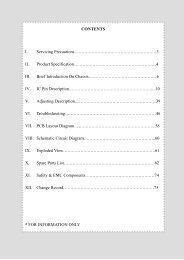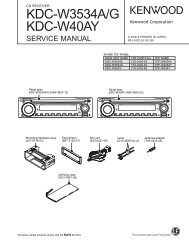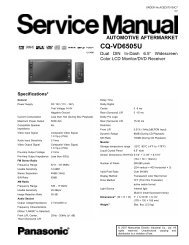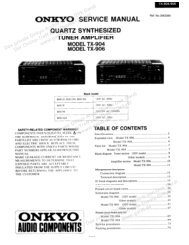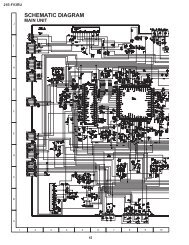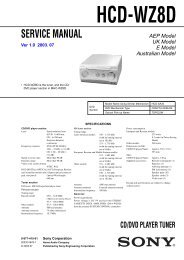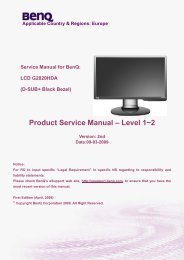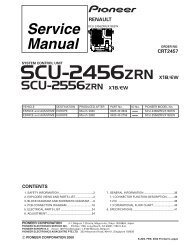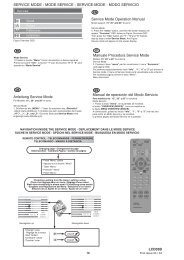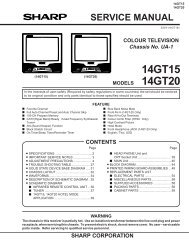Technology of Q 2500 colour TV set
Technology of Q 2500 colour TV set
Technology of Q 2500 colour TV set
Create successful ePaper yourself
Turn your PDF publications into a flip-book with our unique Google optimized e-Paper software.
<strong>Technology</strong> <strong>of</strong> Q <strong>2500</strong> <strong>colour</strong> <strong>TV</strong> <strong>set</strong>If the SDA 6000 is waiting for data from a peripheraldevice, then the 22 kHz must beswitched at L level on pin 90. The device addresseddampens the 22 kHz signal for therequired period by changing the input impedance,so that the data can be transferred tothe SAT unit <strong>of</strong> the <strong>TV</strong> <strong>set</strong>. The SAT unitchanges this signal into L and H pulses <strong>of</strong> thesame duration, which are applied to connectorW 1211, pin 7 on the signal board. The signalis inverted in transistor Q 2831. The DiSEqCinformation is then made available to the SDA6000 on pin 7.4.2 Bus systems in Q <strong>2500</strong> chassisSeveral bus systems are used in order to implementthe large number <strong>of</strong> switching andcontrol functions <strong>of</strong> the Q <strong>2500</strong> chassis in areasonable time, and for error-free addressing<strong>of</strong> the ICs.For this the SDA 6000 generates three I²Cbussystems with which the memory IC, thecontrol ICs for the HF/IF component, the ICson the SAT unit, the converter for video andaudio, the building levels in the video section,for PIP and multi-sound processor are controlledThe I²C bus systems 1 and 2 on the otherhand operate with a common clock line andseparate data lines. The I²C bus system 0operates as usual with separate data andclock lines.In all I²C bus systems there is constant datatraffic. If the Bus Stop command is issued orthe device is started with the Power On command,the bus lines are then <strong>set</strong> to 5 V d.c.Document Q <strong>2500</strong> 72 © Loewe ProCollege



